IT Project Discovery Phase: What's That, and What Does It Do?
In today's fast-paced world, embarking on a new project—whether it's in IT, hardware, or IoT—requires careful planning and a clear understanding of the challenges ahead. One of the most crucial steps in this process is the Discovery Phase. In our article, we'll delve into the specifics of the Discovery Phase, exploring its importance and the unique considerations for different types of projects, such as software, hardware, and IoT solutions.
- Purpose of the Discovery Phase
- Deliverables of the Discovery Phase
- Is the Discovery Phase Necessary?
- Benefits of the Discovery Phase
- The Discovery Phase in Software Projects
- The Discovery Phase in Firmware and Hardware Development
- The Discovery Phase in IoT Projects
- Our Approach to the Discovery Phase
- Conclusion
Purpose of the Discovery Phase
Each project is unique, requiring a tailored approach to its development. The Discovery Phase is designed to address the fundamental questions: What is the best way to develop your product? How can you ensure that your idea is implemented effectively? During this initial stage, developers evaluate their capabilities, needs, and the efforts required to achieve the project's goals. They also gather essential requirements to form a solid foundation for the project.
The primary aim of the Discovery Phase is to create a product that meets the end-users' expectations while staying within the allocated time and budget. The initial phase involves planning how to allocate time and funds, ensuring transparency and accountability for both the client and the outsourcing team.
While the Discovery Phase is unique to each project, there are common factors that influence its scope:
- Company involvement: The duration and focus of the Discovery Phase depend on the project's current stage. It can be initiated as an initial evaluation step, a focused analysis of a specific part, or even a rework of prior work.
- Type of IT services: The importance of the Discovery Phase varies across services. For instance, determining whether changes or additions impact software, hardware, machine learning, or IoT solutions is critical. Hardware, IoT, embedded software, and firmware are generally less flexible than software or machine learning solutions, meaning changes can be costly and complex to implement.
- Budget: The Discovery Phase is an additional expense, which can be a concern for clients with limited budgets. However, skipping this phase could lead to unforeseen costs down the line.
Despite these differences, the initial steps of various projects share a common framework, forming the basis for subsequent design and development:
- To clarify the customer's vision of the product,
- To align the customer's wishes with the needs of the end users,
- To conduct preliminary technical expertise to ensure the development team’s capabilities.
This process may take considerable time and effort, but it is essential for the project's long-term success.
Deliverables of the Discovery Phase
The outcome of the Discovery Phase typically includes a comprehensive Discovery Phase Report, detailing one or more potential approaches, system mock-ups, proof of concept, and technical documentation. The report serves as a summary of the research findings and provides recommendations for creating specific parts of your solution.
Having a Discovery Phase Report ensures that the final product meets the required specifications within the given timeframe and budget. It gives the client confidence that their expectations will be met.
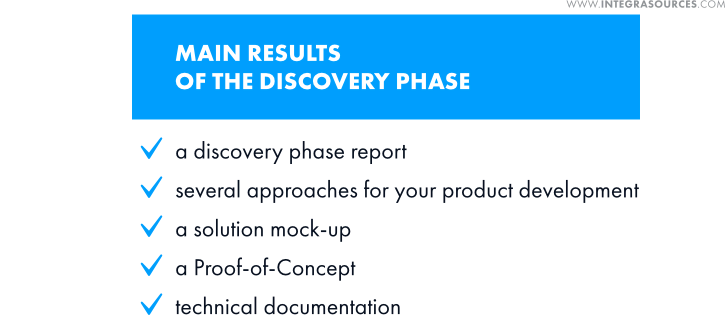
Is the Discovery Phase Necessary?
The Discovery Phase is often misunderstood by clients, who may view it as an unnecessary expense or even a waste of money. However, this phase plays a critical role in identifying potential pitfalls, minimizing risks, and saving time and budget. Skipping the Discovery Phase can lead to unforeseen complications, such as:
- Continuous expansion of the development process,
- Increased costs,
- Delayed deadlines,
- Failure to meet desired outcomes.
Benefits of the Discovery Phase
The Discovery Phase lays the groundwork for a successful project implementation. By completing this stage, you gain several advantages:
- A transparent and well-organized development process,
- Clarity on potential challenges and solutions,
- Protected budget through minimized risks and shortened time-to-market,
- Diverse approaches for creating your product,
- A mock-up or Proof of Concept to visualize your future product, helping you refine your idea and ensure alignment with user expectations.
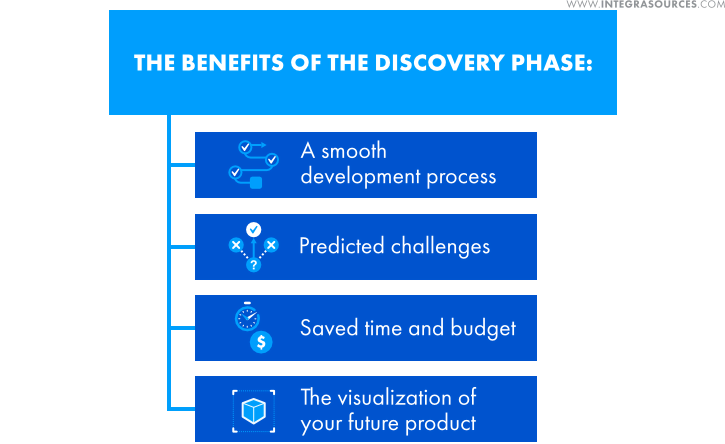
In essence, the Discovery Phase bridges the gap between your idea and its execution. Let's explore what makes this bridge strong and reliable across various project types.
The Discovery Phase in Software Projects
Software discovery differs significantly from hardware or firmware discovery. Factors such as duration, results, discovered aspects, team composition, and cost vary greatly between these types of projects.
Software Discovery Phase
Firstly, gathering all necessary business requirements is crucial. This enables software developers to understand the broader vision of the software product. Both the customer and the technical team must focus on essential details for implementation, such as:
- Who will use the software?
- How will the software be used after development?
- What data will the software process?
- What output is expected?
- User Stories and Use Cases.
These elements form the foundation for the software development strategy. Next, the collected information is analyzed for validity, leading to the creation of a requirement specification document.
Upon completion of the software discovery phase, the following deliverables are typically produced:
- A mock-up or Proof of Concept of the optimal UX design,
- A mock-up or Proof of Concept of the software solution or its studied part,
- A prepared requirement specification document,
- Lists of Use Cases and User Story descriptions.
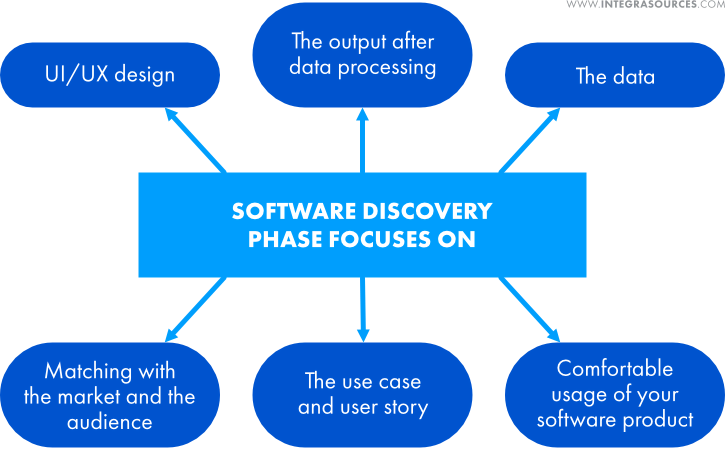
For example, we conducted a Discovery Phase for a project involving LED matrix display software for freeway monitoring. The system visualizes weather conditions, traffic jams, and road signs for drivers.

Our client wanted users to access this information remotely via either a mobile app or a web app. After analyzing the technologies and compatibility, we recommended building a web application, which proved to be more cost-effective and efficient for real-time data visualization.
Machine Learning discovery presents unique challenges, such as identifying the correct dataset and defining the problem the solution should solve. During this phase, we analyze:
- The main objectives,
- Target features and datasets,
- The problem to be solved,
- Potential improvements.
For example, we developed a computer vision-based camera system for detecting falls among the elderly. Starting with the Discovery Phase was essential for determining project feasibility. We identified the right amount of depth cameras and the type of data needed for training the Machine Learning model. As a result, we created a Proof of Concept for a complete solution, enabling caregivers to respond promptly to falls.
The Discovery Phase in Firmware and Hardware Development
Firmware and hardware development is less flexible than software, making changes costly and time-consuming. Therefore, the Discovery Phase is particularly valuable for projects involving devices, embedded systems, and low-level programming.
Before diving into development, it’s important to define:
- Design limitations,
- Problems the hardware or firmware solves,
- Target market (industrial or consumer electronics),
- Feasibility of using existing technologies,
- Suitable technologies and approaches,
- Potential changes affecting future development,
- Features to enhance performance,
- Challenging aspects of the hardware or firmware,
- Software communication requirements.
The Discovery Phase uncovers these key constraints, ensuring a robust foundation for hardware and firmware development.
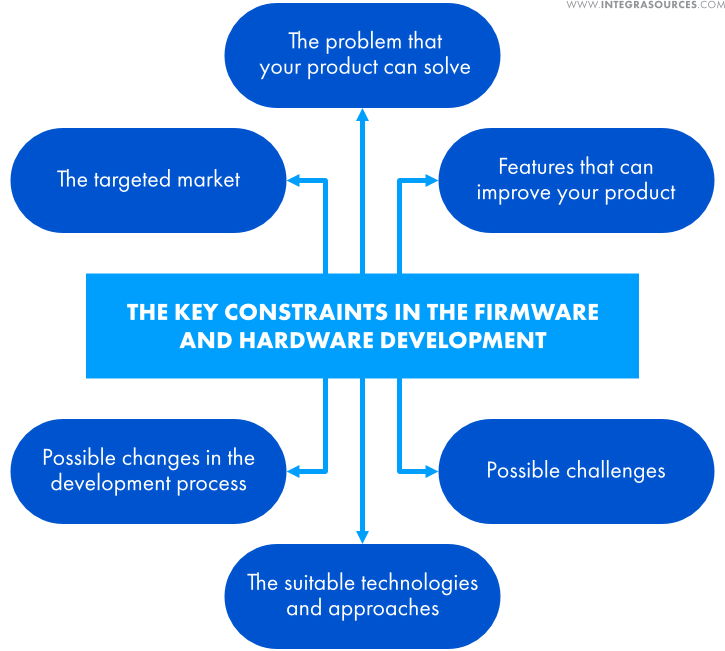
For instance, our team conducted a Discovery Phase for custom capacitive keyboard electronics. The client required capacitive sensing, spring collapse detection, simultaneous key detection, and compatibility with the QMK keyboard.
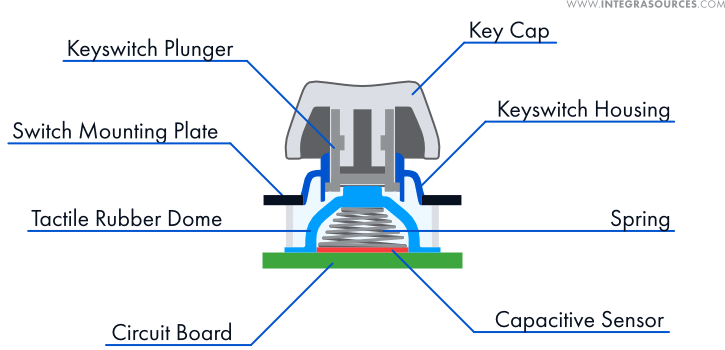
We explored two approaches: using discrete components or capacitive sensor ICs. After simulating both, we concluded that discrete components were the better choice due to cost-efficiency and performance. The client agreed, opting for the first solution.
The Discovery Phase in IoT Projects
IoT projects combine software, firmware, and hardware development, requiring all components to work seamlessly together. Changes in one part can affect others, making the Discovery Phase critical for identifying suitable components, features, and challenges early on.
An IoT system consists of interconnected devices, sensors, databases, and software. Ensuring secure and stable communication among these components is vital. A Discovery Phase helps define the right components, features, and potential obstacles, avoiding costly redesigns later.
Upon completion, the Discovery Phase delivers:
- A detailed description of the IoT system's purpose, behavior, and requirements,
- A list of necessary physical and virtual units,
- Specifications for information flow,
- Suitable communication and data storage options,
- A mock-up or Proof of Concept of the IoT solution,
- Possible solutions and approaches for building the system.
For example, we conducted a Discovery Phase for an IoT system to monitor and control recreational vehicle equipment remotely. Our client needed the right MCU, sensors, and power supply options for a BLE gateway device. Additionally, we developed a mockup of the software, including mobile and web applications, cloud services, and dashboards.

These insights helped our client choose the right approach, and the project is now nearing launch.
Our Approach to the Discovery Phase
At Integra Sources, we use agile methodologies to conduct the Discovery Phase. This allows us to explore your solution from multiple angles and identify the most effective development path.
Our agile Discovery Phase template includes the following stages:
- Gathering client requirements for functionality, cost, features, etc.,
- Including developers with relevant skills in the Discovery Phase team,
- Conducting research to address client questions and define development approaches,
- Building a mock-up or Proof of Concept,
- Creating a detailed Discovery Phase Report and presenting it to the client,
- Developing a roadmap with timelines, budget, and milestones,
- Agreeing on next steps.
The Discovery Phase typically requires 40 to 200 man-hours depending on project complexity. Our team usually includes a project manager, developers, a tech lead, and the client’s team. For complex or innovative projects, we expand the team with additional engineers.

With extensive experience in software, machine learning, firmware, hardware, and IoT development, our team can guide your project from concept to completion. Contact us to explore your idea further.
Conclusion
Embarking on a new project can be daunting, but with proper planning, the journey becomes smoother and more transparent. The Discovery Phase ensures your idea is implemented effectively while mitigating risks. By taking the time to understand your project thoroughly, you set yourself up for success.
Crawler Excavator,Second Hand Mining Equipment,Used Medium Excavators,Used Excavator Equipment
XCMG Global Circularity Business Center , https://www.usedmachinemkt.com